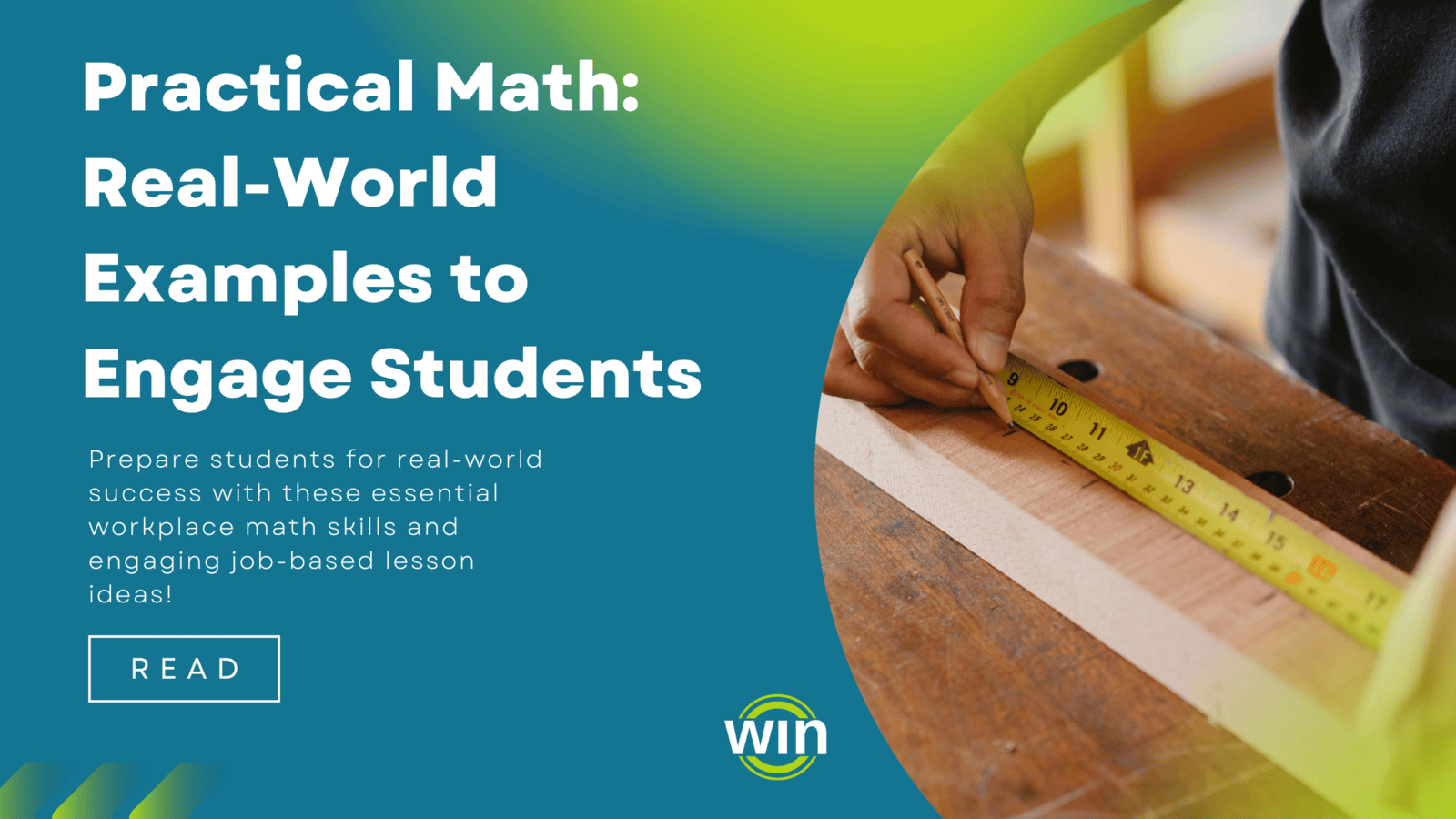Teaching Essential Work Ready Math Skills: A Guide for Teachers

In today’s fast-paced and data-driven work environments, math is an indispensable tool for problem-solving, decision-making, and efficiency. By integrating job-based scenarios into lesson plans, educators can help students connect math concepts to real-world applications, boosting engagement and preparing them for future careers. Below is an overview of essential workplace math skills, followed by examples to inspire your teaching.
Overview of Essential Work Ready Math Skills
Workplace math covers foundational to advanced concepts that are used daily across industries. These skills fall into several categories:
- Basic Operations with Numbers: Adding, subtracting, multiplying, and dividing whole numbers, fractions, decimals, and percentages to complete tasks such as calculating hours worked or determining discounts.
- Measurement and Geometry: Measuring length, width, height, volume, and weight, as well as calculating perimeter, circumference, and area for projects like surveying land or designing products.
- Data Analysis and Problem-Solving: Using graphs, tables, and data to identify trends, forecast outcomes, and make informed decisions.
- Financial Math: Estimating costs, calculating sales tax, applying ratios and percentages, and analyzing budgets.
- Unit Conversions: Converting between units of length, volume, weight, distance, and time to ensure accuracy in project planning.
- Verification and Accuracy: Reviewing calculations for errors and verifying data to support decision-making.
Applying Workplace Math Skills in Lesson Planning
Here are six examples of how to connect these skills to job-based scenarios:
- Scenario: Calculating Hours Worked
Skill Focus: Add and subtract with whole numbers.
Activity: Provide students with mock timesheets for employees and ask them to calculate the total hours worked in a week. Include overtime calculations to enhance complexity. - Scenario: Designing a Product
Skill Focus: Calculate perimeter, circumference, or area.
Activity: Ask students to design a rectangular garden bed or a circular pizza tray. They must calculate the materials needed based on dimensions provided. - Scenario: Analyzing Sales Trends
Skill Focus: Analyze data represented in graphs or tables.
Activity: Give students a bar graph showing monthly sales for a product. Have them identify trends, calculate percent increases or decreases, and predict future sales. - Scenario: Mixing Materials
Skill Focus: Calculate percentages and determine ratios.
Activity: Simulate a landscaping project where students must mix fertilizer. Provide different ratios (e.g., 2:1 or 3:2) and ask them to calculate quantities needed for a specific area. - Scenario: Determining Shipping Costs
Skill Focus: Solve problems with fractions.
Activity: Assign shipping weights (e.g., 2 1/4 lbs. or 3 3/8 lbs.) and rates per pound. Have students calculate the total shipping cost for multiple packages. - Scenario: Budgeting for a Project
Skill Focus: Estimate costs using averages and rates.
Activity: Provide a scenario where students must plan a small business project, such as hosting an event. Include material costs, labor rates, and average attendance to estimate a budget.
Tips for Integrating Math Skills into Career Readiness Lessons
- Use Industry-Specific Examples: Tailor scenarios to fields like healthcare, manufacturing, retail, or construction.
- Incorporate Technology: Utilize spreadsheet software for tasks like data analysis and cost estimation.
- Encourage Group Work: Assign team projects to simulate workplace collaboration and problem-solving.
- Focus on Soft Skills: Emphasize accuracy, verification, and justification of decisions to build critical thinking and professional communication.
By embedding these workplace math skills into lesson plans, educators can make learning more relevant and equip students with tools for success in any career.
Free Work Ready Math Lesson Planning Worksheet
To help you incorporate career math into your classroom, we've created a lesson planning worksheet that you can download and/or print for free! Enter your email below to gain access to the WIN Learning Library of free career readiness resources.
